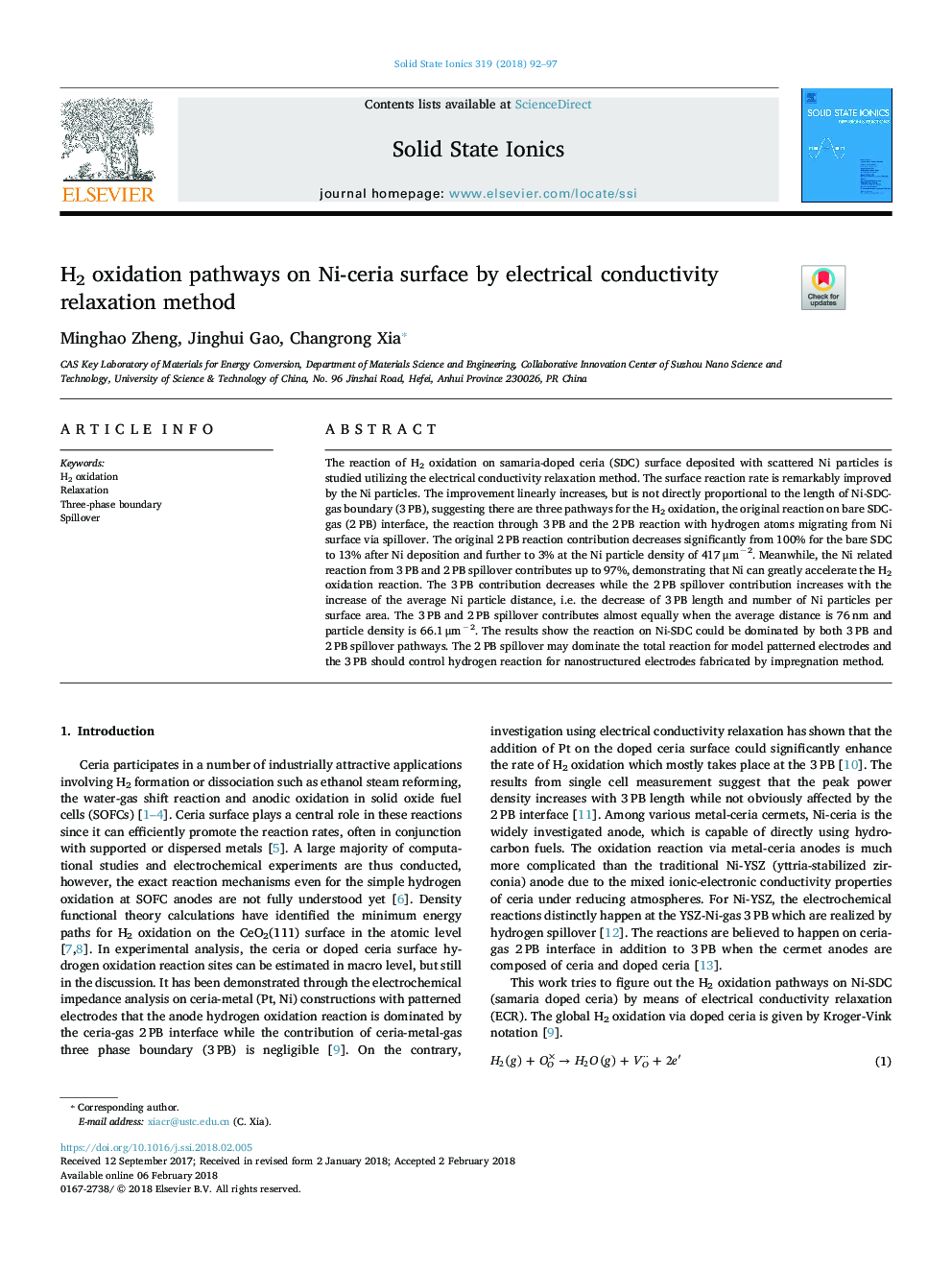| Article ID | Journal | Published Year | Pages | File Type |
|---|---|---|---|---|
| 7744339 | Solid State Ionics | 2018 | 6 Pages |
Abstract
The reaction of H2 oxidation on samaria-doped ceria (SDC) surface deposited with scattered Ni particles is studied utilizing the electrical conductivity relaxation method. The surface reaction rate is remarkably improved by the Ni particles. The improvement linearly increases, but is not directly proportional to the length of Ni-SDC-gas boundary (3â¯PB), suggesting there are three pathways for the H2 oxidation, the original reaction on bare SDC-gas (2â¯PB) interface, the reaction through 3â¯PB and the 2â¯PB reaction with hydrogen atoms migrating from Ni surface via spillover. The original 2â¯PB reaction contribution decreases significantly from 100% for the bare SDC to 13% after Ni deposition and further to 3% at the Ni particle density of 417â¯Î¼mâ2. Meanwhile, the Ni related reaction from 3â¯PB and 2â¯PB spillover contributes up to 97%, demonstrating that Ni can greatly accelerate the H2 oxidation reaction. The 3â¯PB contribution decreases while the 2â¯PB spillover contribution increases with the increase of the average Ni particle distance, i.e. the decrease of 3â¯PB length and number of Ni particles per surface area. The 3â¯PB and 2â¯PB spillover contributes almost equally when the average distance is 76â¯nm and particle density is 66.1â¯Î¼mâ2. The results show the reaction on Ni-SDC could be dominated by both 3â¯PB and 2â¯PB spillover pathways. The 2â¯PB spillover may dominate the total reaction for model patterned electrodes and the 3â¯PB should control hydrogen reaction for nanostructured electrodes fabricated by impregnation method.
Related Topics
Physical Sciences and Engineering
Chemistry
Electrochemistry
Authors
Minghao Zheng, Jinghui Gao, Changrong Xia,
